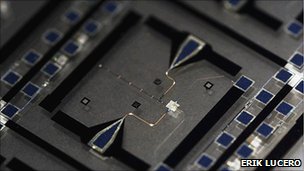GCHQ chief reports 'disturbing' cyber attacks on UK
The UK has been subject to a "disturbing" number of cyber attacks, the director of communications intelligence agency GCHQ has said.
The UK says cyber crime is as serious a threat as international terrorism
Sensitive data on government computers has been targeted, along with defence, technology and engineering firms' designs, Iain Lobban said in the Times.
Sensitive data on government computers has been targeted, along with defence, technology and engineering firms' designs, Iain Lobban said in the Times.
There was a "significant" unsuccessful internet-based attack on Foreign Office computer systems this summer, he added.
On Tuesday, the government hosts a two-day conference over the issue.
Foreign Secretary William Hague convened the London Conference on Cyberspace against a backdrop of the UK treating the threat from cyber warfare as seriously as that from international terrorism.
It aims to bring together political leaders, such as US Secretary of State Hillary Clinton and EU digital supremo Neelie Kroes, with leading cyber security experts and technology entrepreneurs such as Wikipedia founder Jimmy Wales and Cisco vice-president Brad Boston.
'Threat to economy'
Mr Hague believes a "global co-ordinated response" is required to forge policy on cyber development.
Writing in the Times, Mr Lobban said such an inclusive approach was vital.
"The volume of e-crime and attacks on government and industry systems continues to be disturbing," he wrote.
"I can attest to attempts to steal British ideas and designs - in the IT, technology, defence, engineering and energy sectors, as well as other industries - to gain commercial advantage or to profit from secret knowledge of contractual arrangements.
"Such intellectual property theft doesn't just cost the companies concerned; it represents an attack on the UK's continued economic wellbeing."
Mr Lobban added that government online taxation and benefits services could be targeted in future and said a black economy had already developed which saw UK citizens' credit card details offered for sale.
If you liked this article then please follow us on facebook.






